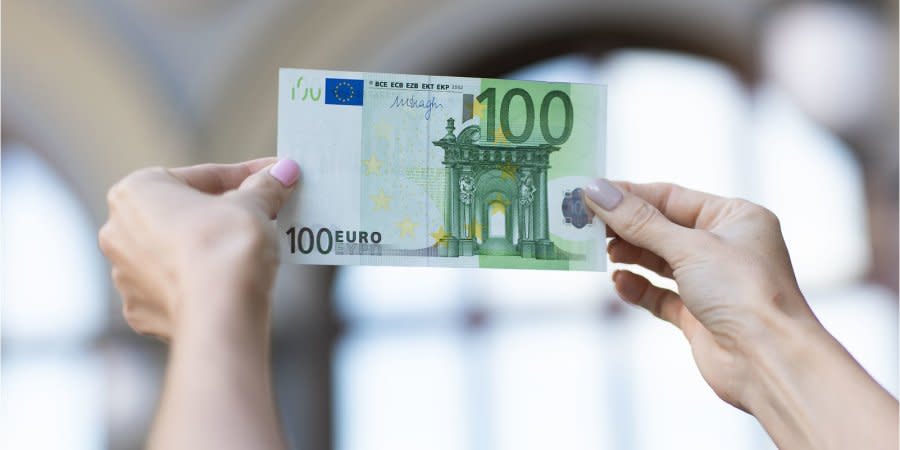What is the forecast for the hryvnia’s exchange rate in the coming months?

Ukraine’s forex markets are much less panicked and jittery, now that the war has been ongoing for over six months. Hryvnia exchange rates are shaped by financial assistance from abroad, volumes of Ukraine’s agricultural exports, and more generally by trade deficits.
Read also: Hryvnia strengthens against euro, holds steady against dollar
Managed devaluation
Current exchange rates are likely to remain largely the same in the immediate future, the expert consensus suggests. The official rate of UAH 36.6 to the dollar is unlikely to be revised this fall, “provided there’s no major battlefield losses and international financial aid remains consistent,” says the chief investment analyst at Concorde Capital, Oleksandr Parashchii.
Stable NBU reserves, a declining trade deficit, and contracting hryvnia emission rates all point towards a status-quo scenario. Existing limits and restrictions mean there’s still going to be a gap between the official and market exchange rates, but it has already narrowed significantly. The current spread is around 10-12%, down from 30% in June, according to Olena Bilan, chief analyst at Dragon Capital (Dragon Capital is NV’s proprietor). Bilan believes the cash market rate is likely to fluctuate around UAH 40-42 to $1.
There’s still lingering downward pressure on the Ukrainian currency, head of treasuries sales department at Avangard Bank, Yurii Krokhmal told NV.
The NBU could revise the exchange rate in late 2022, “especially if international financial support isn’t sufficient to cover Ukraine’s expenses,” Krokhmal added.
Despite these warnings, there’s no risk of an uncontrolled cascading devaluation, given current NBU reserves and financial aid dynamics.
“The current equilibrium could last for 3-6 months; but certain devaluation pressure remains,” says a former banker from JP Morgan and Deutsche Bank, Roman Sulzhyk.
NBU’s policies also suggest the situation will remain stable. Bilan points out that the NBU sold $1.3 billion of its reserves in August and July – a stark contrast with the nearly $4 billion sold in June, before the hryvnia’s devaluation. The controlled devaluation helped stabilize the market.
Read also: EU to provide Ukraine with EUR 5 billion in financial aid, von der Leyen says
Official data reported NBU’s reserves at $25.4 billion as of September, meaning they increased by 13.6% in August, reversing their long-time decline. The increase was made possible thanks to foreign assistance, limited NBU interventions, and lower sovereign debt payments. Ukraine received $4.8 billion in funding in August, including $3 billion in U.S. aid.
Currency flight
Ukraine’s current predicament leaves it with no alternatives to relying on international assistance, when it comes to injecting enough money into the country’s economy. If Kyiv continues to receive $2-4 billion per month, NBU reserves should hold.
“This should bolster confidence in hryvnia, and alleviate some of the pressure,” Parashchii said.
“We expect the NBU to maintain the exchange rate at current levels, expending around $2 billion every month.”
Agricultural exports from Ukraine have finally moved past the crippling Russia-induced deadlock. Since Aug. 1, around 100 cargo ships set sail from Odesa and nearby ports, carrying 2.21 million tons of Ukrainian produce.
The internationally-brokered grain deal allowed Kyiv to drive down its trade deficit, opening a vital flow of foreign currency, alleviating the hryvnia’s woes. Nevertheless, it’s still a far cry from pre-war trade levels, when Ukraine exported 6 million tons of grain every month – Krokhmal notes.
Read also: NBU comes to the rescue as Ukrainian banks run short of cash
“Ukraine’s trade deficit was around $6.2 billion in June-July – compared to $600 million in 2021,” Parashchii said.
“The difference is mostly due to Ukrainian refugees spending $2.9 billion abroad, and about the same amount in lost metal exports.”
The expert warns that growing agricultural exports could only partially close the trade imbalance gap.
Read also: NBU resumes trading in treasuries and bonds
Bilan’s figures suggest Ukraine’s trade deficit fell by a third in August, to around $1 billion.
“Should this dynamic continue, we can expect a further decline in the trade deficit,” she concluded.
Read the original article on The New Voice of Ukraine

